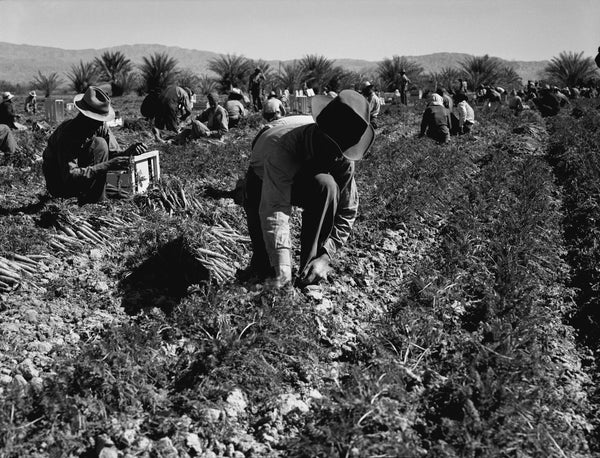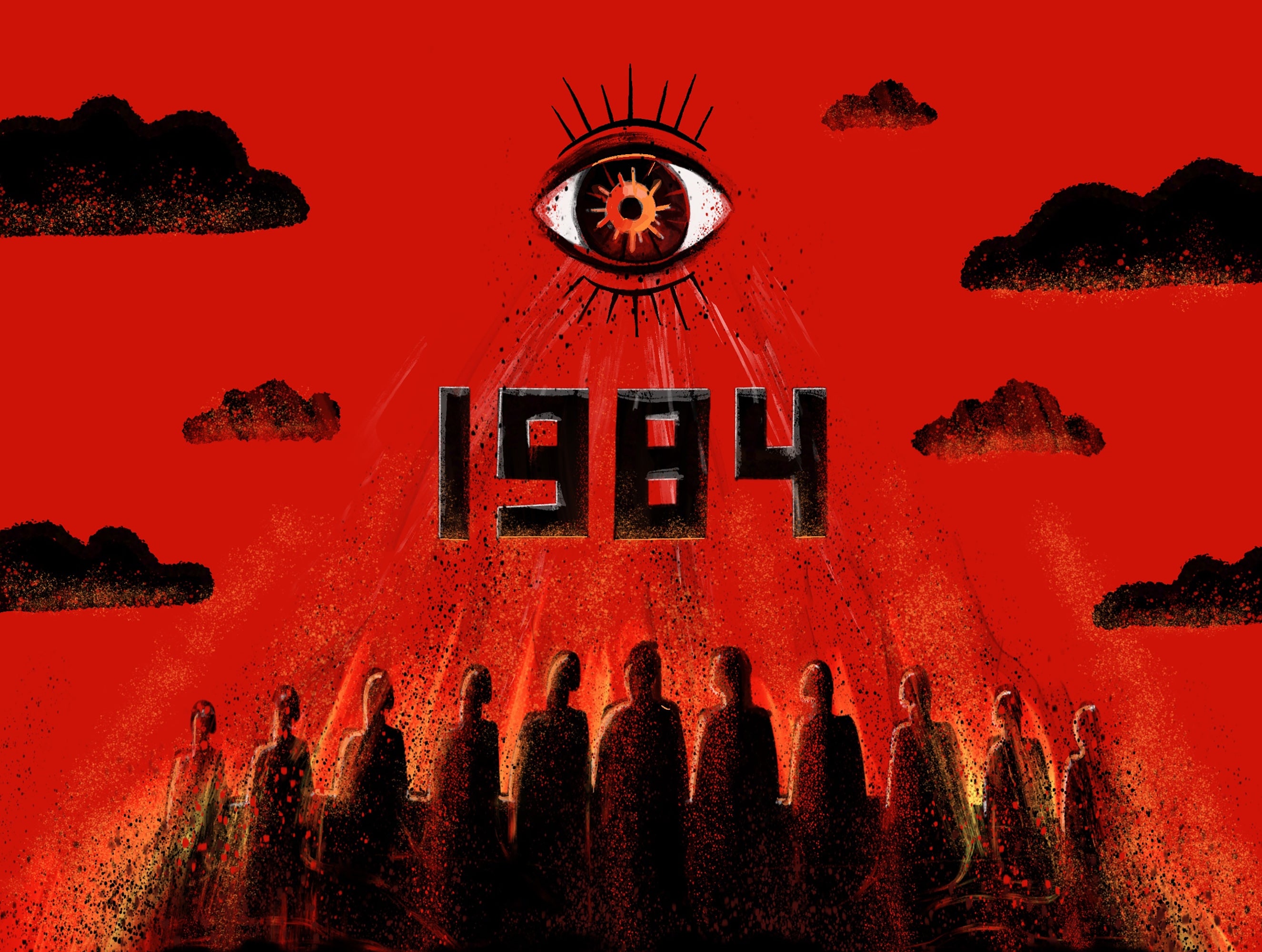Story Skeleton—Of Mice and Men

Story structure relates to the psychological appeal of narrative, that which engages readers and builds in them a sense of anticipation—a desire to know what happens next. This blog series is meant to demonstrate the universality of story structure with plot breakdowns of award-winning and classic novels.
By Michelle Barker
Introduction and thematic summary
Published in 1937, John Steinbeck’s novella, Of Mice and Men, is a masterpiece of foreshadowing and an object lesson in how to use cohesive imagery to serve both narrative structure and theme. It is one of the few longer works of fiction that employs the objective point of view, which is remarkably effective in allowing readers to think for themselves about what Steinbeck is doing and why. (An objective POV presents events and characters without internal thoughts or feelings, compelling readers to infer motivations and emotions from actions and dialogue alone.) The narrative structure is efficient and clean.
The novella is also surprisingly controversial—frequently banned, even in Canada in 2024—and is on the American Library Association’s list of the top 100 banned books. Which proves yet again that some people just don’t understand the point of reading fiction.
The title comes from Robert Burns’ poem, “To A Mouse”—“The best laid schemes o’ Mice and Men…” fall apart, and instead of joy, we get “grief an’ pain.” But Of Mice and Men is about far more than plans falling through. It explores the relationship between humanity and the animal world and what happens when humans are treated like animals.
In short, this heartbreaking novella is about what it means to be human.
Narrative goal
Of Mice and Men takes place during the Great Depression near Soledad, California and tells the story of two migrant workers, George Milton and Lennie Small. George, the protagonist, is quick-witted, pragmatic, and street smart. He has teamed up with Lennie, who has significant challenges with understanding and processing information. Other characters are immediately suspicious of their friendship; they assume George must want something from Lennie. Why else would he hang out with him?
The thing is, Lennie offers companionship. The mark of a person’s character is their willingness to help others while expecting nothing in return, and while George sometimes complains about taking care of Lennie, it’s obvious that he cares deeply for him and is protective of him. Lennie has certain stories that he repeats like mantras, and one of them is about friendship and how he and George are different from the typical ranch hands who battle loneliness: “I got you to look after me, and you got me to look after you…”
Their companionship becomes a dynamic theme. The characters who are vulnerable—like Candy and Crooks—see the value in it and want to join in. The theme of companionship is linked to George and Lennie’s shared goal, which is to own a ranch—which really amounts to reclaiming their dignity. They want a place of their own where they call the shots, raise their own animals, and grow their own food—where they “live off the fat of the land” as Lennie puts it, which seems like an impossible dream amid the Great Depression.
This is the underlying stasis motivation and the source of the long-term stakes. George has secured jobs on a new ranch so that they can save the money they need to purchase the land. But George’s real job on this ranch is to keep Lennie out of trouble. That is his narrative goal. Lennie is big and doesn’t know his own strength. He also tends to say and do things that are misconstrued as inappropriate. Lennie’s sole focus is on the future ranch, specifically on taking care of the rabbits. That’s all he thinks about.
To express the narrative structure in formal terms: When Lennie gets into trouble with a woman, he and George have to run away and get new jobs. But when Curly and his flirtatious young wife show up, George must keep Lennie out of trouble or else they will never get their ranch.
This also creates an internal conflict for George because he doesn’t want to be alone. He teams up with Lennie because this gives him someone to care about. Caring for Lennie is what makes him human. He must protect Lennie or else something terrible will happen to him and then George will end up not only alone but also less than human.
In medias res
Steinbeck starts by using imagery in an intentional way. The novella is bookended by a riverside scene that, in the beginning, is pastoral. Steinbeck also describes Lennie with animal characteristics, like a bear. Both elements become important later.
The novella begins after the inciting incident has already happened. Because Lennie forgets day to day details, he is in the same position as the reader in terms of lacking context. This allows Steinbeck to fill in the gaps of both stasis and the inciting incident because George has to keep reminding Lennie of what they’re doing (going to a new job) and why (because they had to run away from the last one in Weed). Lennie can’t remember important logistical details, but he remembers every single detail about their dream to own a ranch.
In this opening scene, we get snapshots of the two main characters who are great foils for each other. George is responsible and practical. His main preoccupation, aside from survival, is keeping Lennie out of trouble. We see this in the dead mouse incident—an indication of Lennie’s innocent simplicity—which is the first foreshadowing that he doesn’t know his own strength and accidentally kills things he only wants to pet and care for.
Rising action
James Scott Bell has talked about a story having two doorways of no return. The first doorway pushes the characters into the story, where they’re stuck. The second doorway pushes them toward the climax. In Of Mice and Men, the first doorway is the new job on the ranch. George and Lennie need this money. Once they arrive, they have no real choice but to stay.
The first person they meet is Candy, an important character because of his vulnerability. He’s elderly, has only one hand, and has an old dog that’s on its last legs. Candy’s relationship with the dog mirrors the way people view George’s relationship with Lennie. The dog isn’t of any use anymore, but it is Candy’s companion and he cares for it. The trouble is, Candy isn’t of any use anymore either and he knows it. He has no job security and could be let go at any moment.
The boss’s son, Curley, is the antagonist. When he walks into the bunkhouse, he immediately senses weakness in Lennie and picks on him. As Candy tells them later, Curley is the type who picks on big guys because he’s small and wishes he was big. Both George and Lennie sense he will be trouble. Even at this early stage of the novel, Steinbeck is laying the foundation for the tragedy to come. George admits he’s scared and makes Lennie repeat what he must do if there’s trouble (hide at the riverside where the novella began).
And then in comes Curley’s new wife. A good obstacle in a story will amplify the stakes, and Curley’s wife doesn’t disappoint. If Curley is trouble, his pretty wife is double trouble. The reader has already suspected this job won’t go well; when Lennie can’t take his eyes off her, we know for sure. Even before she shows up, we are already prejudiced against her, having heard from Candy that she’s “a tart” who flirts with everyone. She is the only female character in the novel, as well as being the only one without a name. She’s the archetypal temptress, but there’s more to her than the characters (and readers) assume.
As soon as Curley’s wife has left the bunkhouse, Lennie shouts that he doesn’t like this place and wants to leave. George agrees—but they’re stuck here. They have to stay if they want to make enough money to buy their ranch.
Midpoint
The character of Slim provides a contrast to Curley. He treats George and Lennie with dignity and sees the goodness and innocence in Lennie’s character. When he mentions that his dog has had pups, two things come of it. Lennie wants one to take care of, and Carlson wants Candy to shoot his old dog (because old = useless) and replace it with one of the pups.
At the midpoint of the novella, Carlson browbeats Candy into letting him shoot the old dog because it smells bad. This mercy killing is another instance of foreshadowing, though Carlson doesn’t shoot Candy’s dog out of mercy. He shoots it for selfish reasons. Candy realizes he should have been the one to shoot the dog, even though he didn’t want to.
Lennie’s mishandling of Slim’s pups is (yes) more foreshadowing. Lennie has already accidentally killed mice. We know things won’t go well with those pups. At the same time, Curley is looking for his wife again—more foreshadowing. There’s not a single extraneous detail in this novel.
False victory
When George and Lennie talk about the ranch they plan to buy, Candy reveals he has money saved up thanks to the compensation he received for the loss of his hand. Candy has just seen what happens to a creature that no one has any use for and realizes that going in on the ranch might be his way to achieve security. Suddenly the dream that has been mostly a fantasy becomes a plan with practical steps forward. For the first time, these characters have hope.
Rising action
When Curley returns to the bunkhouse and misreads Lennie’s smile as a taunt, he attacks—and Lennie accidentally crushes Curley’s hand. No one blames him for this, however, and Slim warns Curley to tell everyone he got the hand caught in a machine.
The story shifts to Crooks, the only Black character in the novella. How people treat Crooks is an echo of how they treat Lennie—again, a true revelation of character. It’s interesting (but not surprising) to see who disregards the racial barriers and who enforces them; who treats Crooks with dignity, and who treats him like an animal.
Crooks is forced to live apart from everyone else in the harness room by the manure pile. Steinbeck shows us his humanity immediately, not only by the fastidious way he keeps his room, but also by the books he owns and the pain in his crooked spine. When Lennie visits him (which no one is supposed to do), he is mystified by Crooks’ exclusion from the bunkhouse.
Lennie isn’t supposed to tell anyone about the ranch plans, but of course it’s all he can think about so he tells Crooks. Crooks recognizes the similarities between them: they are both disregarded, ignored. The difference, however, is that Lennie has George. George is the reason Lennie hasn’t been sent to “the booby hatch.”
Because Lennie has already crossed the racial barrier and is sitting in Crooks’ room, when Candy arrives, he too comes in. Candy reinforces Lennie’s talk about the ranch, and Crooks realizes this is a real plan. He offers to come in on the deal and work for nothing. Suddenly, he too has hope.
And then Curley’s wife shows up. “They left all the weak ones here,” she says—and she’s right. The most vulnerable characters are teaming up. When the conversation takes a turn and she threatens Crooks with lynching, he transforms from someone who had a glimpse of dignity into a cowering animal. In this way, Steinbeck highlights the dehumanizing effects of both discrimination and segregation.
All is lost
Given all the foreshadowing, the novella now hurtles toward a terrible climax that the reader knows is coming. Rather than using the suspense of a surprise event, Steinbeck harnesses the full power of dread as Lennie realizes he has accidentally killed a pup.
This time when Curley’s wife appears, Lennie is alone. There is no one to protect him. Lennie knows he isn’t supposed to talk to her and he tries not to, but Curley’s wife confesses that she’s lonely. She had a dream, rather like the dream of owning a ranch. Hers was to be in the movies. She only married Curley out of spite and now regrets it.
We know this scene will turn bad, and it does. But Steinbeck does something interesting in this moment. By sharing the backstory on Curley’s wife, he has already humanized her, making her into more than just the tart everyone assumes her to be. After Lennie accidentally kills her, we see her essential goodness: “…the meanness and the plannings and the discontent and the ache for attention were all gone from her face,” all of which had been created by loneliness and a lack of hope. What Steinbeck seems to be asserting here is that people are essentially good.
Loneliness is another antagonist in this book and it pops up everywhere. “A guy needs somebody—to be near him,” as Crooks says. “A guy goes nuts if he ain’t got nobody. Don’t make no difference who the guy is, long’s he’s with you….” George plays Solitaire. Even the setting’s name, Soledad, is the Spanish word for solitude.
Lennie knows he has done something bad. This is the second doorway of no return that pushes the story toward the climax. It’s also a plot reversal—the moment when the protagonist’s goal must change. Carlson’s Luger is missing and everyone assumes Lennie has stolen it. The men team up to search for Lennie with the intention of lynching him. George, hoping that Lennie has remembered what to do in case of an emergency (return to the riverside), attempts to send them in the wrong direction, but he also steals the Luger. If worse comes to worst, there’s only one other way to protect Lennie now.
The tragic climax
Steinbeck returns us to the pristine setting of the opening, with one important difference. The natural world that was so hospitable in the beginning has suddenly become threatening. The animal world is made up of predator and prey. Lennie is alone, and he’s being hunted like an animal.
While George is able to kill Lennie with mercy to save him from a worse fate—the very thing Candy could not do with his dog—the fact that he must kill him at all is where the tragedy lies. Yes, George succeeds in his goal of protecting Lennie, but if this is what counts as success, it seems like a rather low bar. The failure is in the circumstances. This world is too harsh for someone like Lennie. It crushes innocence. There is a fundamental lack of compassion, an inability to treat people with dignity. Lennie dies imagining the ranch that he will now never have—and we’re pretty sure George will never get it either.
Hope is human. Companionship is human. Caring for the vulnerable is human. But no matter how you look at it, shooting someone in the back of the head like an animal that needs to be put down is not human.
Denouement
George’s protective relationship with Lennie echoes all the animals that Lennie tried but failed to take care of and killed instead. George, too, has failed to take care of Lennie and has killed him. However, there is a suggestion that loneliness does not triumph in the end—a possibility that George and Slim will team up and find friendship. Slim is one of the few characters who understands George and Lennie’s friendship as an antidote to loneliness. The book ends with that small glimmer of hope, though companionship is misunderstood by Curley and Carlson right to the last word.
English teachers must LOVE this book
There are endless patterns of imagery and themes to trace:
- The significance of smallness: Lennie Small is big in stature but small in comprehension. George is small but it doesn’t seem to bother him, whereas Curley suffers from “short man syndrome” and feels the need to push his weight around and threaten everyone. There is small-mindedness, smallness as vulnerability, and all the small animals that Lennie kills with love.
- All those hands: they are ranch hands. Candy is missing a hand. Curley wears a glove on one hand filled with Vaseline to keep it soft for his wife. Lennie crushes his other hand, making him vulnerable and more like Candy. Lennie’s hands are likened to paws.
-
The use of archetypes: many of the characters in this novella are archetypal.
- Candy: the sage
- Curley’s wife: the temptress
- Slim: the leader
- Lennie: the fool or the innocent
- George: Everyman
- The use of animal imagery to describe Lennie, leading to the question of what makes us human. What distinguishes us from animals? When we treat people as less than human, what happens to them? What happens to us?
In conclusion: what makes Of Mice and Men a classic?
Aside from being a brilliant portrayal of what it means to be human, it is Steinbeck’s use of the objective POV that makes this novella so important. It doesn’t preach or attempt in any way to tell the reader how to think, which is perhaps what makes conservative leaders and small-minded high school teachers so nervous. The POV of this book not only allows space for readers to think for themselves but it demands it. We must decide what we think about Lennie’s tragedy. We must decide how we feel about the way Crooks is treated and that Carlson shoots Candy’s old dog, how we feel about friendship and hope and dignity. How we feel about Curley’s wife. None of this is spoon-fed to us. It simply appears on the page; what we do with it is up to us. This is one reason why it’s such a perfect book to teach—it opens discussion on difficult topics like racism and the treatment of people with disabilities.
There have been many conversations about why we read fiction, what it does besides entertain us. Above all else, a good work of fiction teaches not just compassion but also empathy. It forces us into a different pair of shoes, allows us to see the world in a new way, and maybe even gives us the impetus to change it. It does this better than anything else I can think of other than the direct experience of hardship.
I don’t know if I’ve ever felt so strongly that a particular book should be taught in high schools. Of Mice and Men should also be required reading for anyone who wants to understand how to create thematic cohesion through the use of imagery and how to intentionally build a sense of dread. It is such a powerful book that I had to put it down several times just to get hold of myself.

Michelle Barker is an award-winning author and poet. Her most recent publication, co-authored with David Brown, is Immersion and Emotion: The Two Pillars of Storytelling. Her fiction, non-fiction, and poetry have appeared in literary reviews worldwide. She has published three YA novels (one fantasy and two historical fiction), a historical picture book, and a chapbook of poetry. Michelle holds a BA in English literature (UBC) and an MFA in creative writing (UBC). Many of the writers she’s worked with have gone on to win publishing contracts and honours for their work. Michelle lives and writes in Vancouver, Canada.






